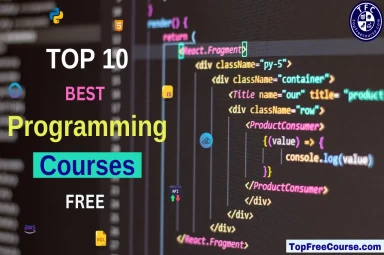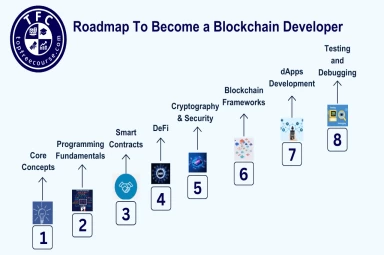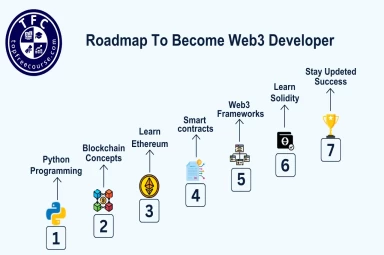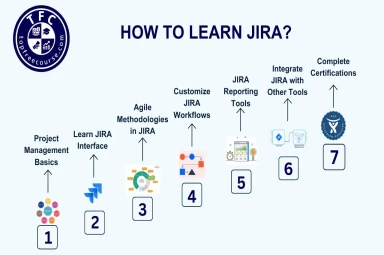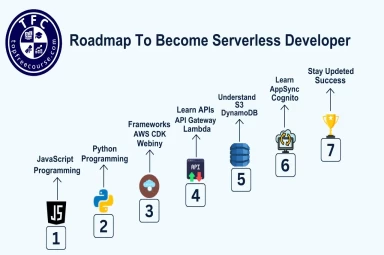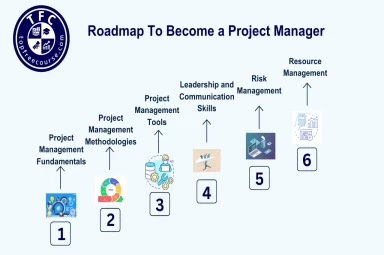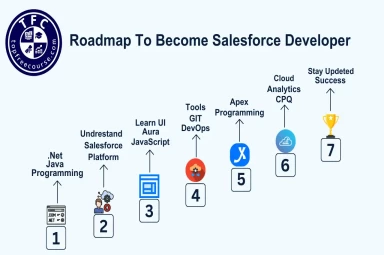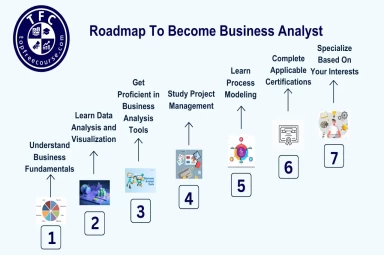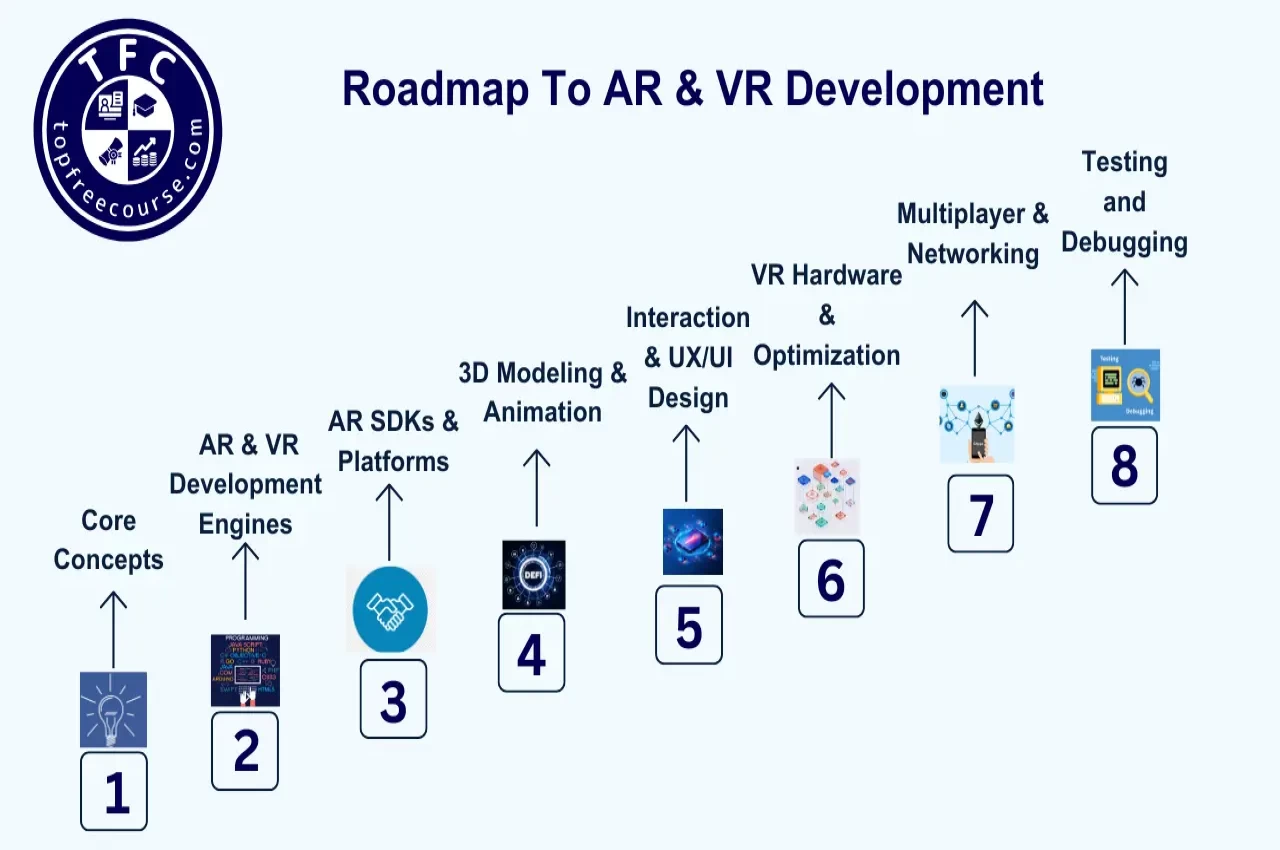
Introduction
In the ever-evolving world of technology, Augmented Reality (AR) and Virtual Reality (VR) stand at the forefront of innovation, offering immersive experiences that revolutionize industries. From gaming and entertainment to healthcare and education, AR and VR technology enable developers to create dynamic, interactive environments. If you're eager to dive into this exciting field, this roadmap will guide you through the essential skills, tools, and learning resources needed to master AR and VR development without breaking the bank.
Understanding AR & VR Development
AR and VR development is not just about coding—it’s about creating interactive, immersive experiences that enhance or replicate real-world environments. AR overlays digital elements onto the physical world using devices like smartphones and AR glasses, while VR provides a fully immersive experience through headsets like the Oculus Quest and HTC Vive. Mastering this field requires knowledge of 3D modeling, real-time rendering, computer vision, and user experience design.
Career Opportunities in AR & VR Development
AR and VR open doors to a variety of career paths. Here are some of the most in-demand roles:
AR/VR Developer
Develop interactive experiences using engines like Unity or Unreal Engine, programming in C#, C++, or Python. Specialize in mobile, web, or headset-based applications.
XR (Extended Reality) Designer
Create user-friendly, immersive interfaces by combining UX/UI design with spatial computing principles. Focus on gesture control, eye tracking, and intuitive interactions.
3D Artist & Animator
Design and animate realistic 3D models for AR and VR environments using tools like Blender, Maya, and Cinema 4D.
Computer Vision Engineer
Develop AI-driven tracking and recognition algorithms for AR applications. Work with OpenCV, TensorFlow, and machine learning for real-time object recognition and interaction.
AR/VR Game Developer
Build immersive gaming experiences by integrating physics, multiplayer interactions, and storytelling elements into AR/VR worlds.
Metaverse Engineer
Shape the future of virtual worlds by developing decentralized, interactive metaverse applications using blockchain and Web3 technologies.
The AR & VR Development Learning Path
To excel in AR and VR development, follow this structured learning path from foundational concepts to advanced expertise:
1. Core Concepts
Understand AR vs. VR vs. Mixed Reality (MR) vs. Extended Reality (XR)
Learn the basics of 3D space, physics engines, and spatial computing
2. Programming Fundamentals
Master C# for Unity or C++ for Unreal Engine
Gain knowledge of Python for computer vision applications
3. AR & VR Development Engines
Learn Unity (for mobile & VR development)
Master Unreal Engine (for high-fidelity graphics in VR)
4. AR SDKs & Platforms
ARKit (iOS) & ARCore (Android)
Vuforia (marker-based AR)
Microsoft HoloLens (Mixed Reality development)
5. 3D Modeling & Animation
Use Blender, Maya, or 3ds Max for designing assets
Learn Rigging, Texturing, and Animation
6. Interaction & UX/UI Design
Develop gesture recognition and voice interactions
Understand spatial audio and haptic feedback
7. VR Hardware & Optimization
Work with Oculus Quest, HTC Vive, and PlayStation VR
Optimize performance for real-time rendering
8. Multiplayer & Networking
Develop multi-user VR experiences using Photon Engine
Implement blockchain integration for metaverse applications
9. Testing & Debugging
Use Unity Profiler & Unreal Insights for performance optimization
Test with headsets and mobile emulators
Your AR & VR Development Resource Guide
Introduction to AR & VR
Description: Learn AR fundamentals, tracking, and real-world applications.
Unity for AR & VR
Course: AR/VR Development with Unity
Description: Develop AR/VR applications using Unity and C#.
Unreal Engine for VR
Course: Unreal Engine VR Development
Description: Learn high-quality VR development with Unreal Engine.
3D Modeling & Animation
Course: Blender 3D for Beginners
Description: Master 3D modeling and animation for AR/VR applications.
ARKit & ARCore Development
Course: ARKit & ARCore Essentials
Description: Build AR apps for iOS and Android using ARKit and ARCore.
VR Interaction & UX
Course: VR User Experience Design
Description: Understand best practices for designing intuitive VR interfaces.
Conclusion
As AR and VR technologies continue to reshape digital interactions in 2025, mastering these skills can open limitless career opportunities. Whether you aim to build immersive games, revolutionize healthcare, or develop metaverse experiences, this roadmap provides a clear learning path and essential resources to kickstart your journey. Embrace the future of spatial computing, develop cutting-edge AR/VR applications, and become a pioneer in this transformative field. Your adventure in AR & VR development starts now!
